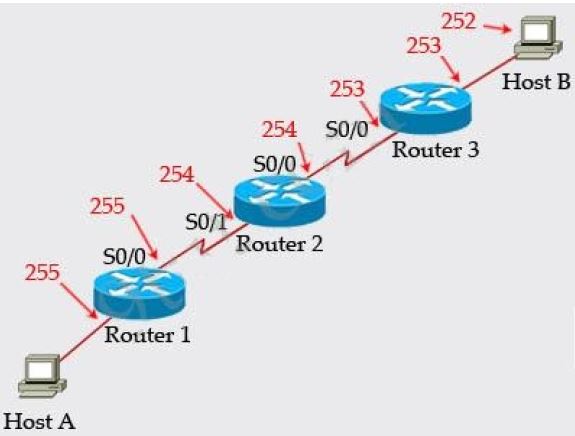Given an IP address 172.16.28.252 with a subnet mask of 255.255.240.0, what is the correct network address?
A. 172.16.16.0
B. 172.16.0.0
C. 172.16.24.0
D. 172.16.28.0
CISCO CCNA Exam – Q97
Which IPv6 address is the equivalent of the IPv4 interface loopback address 127.0.0.1?
A. ::1
B. ::
C. 2000::/3
D. 0::/10
CISCO CCNA Exam – Q96
Refer to the exhibit:
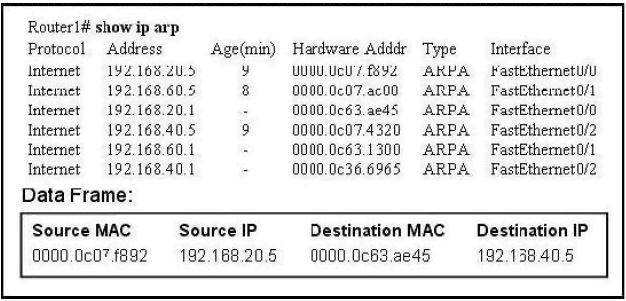
What will Router1 do when it receives the data frame shown? (Choose three.)
A. Router1 will strip off the source MAC address and replace it with the MAC address 0000.0c36.6965.
B. Router1 will strip off the source IP address and replace it with the IP address 192.168.40.1.
C. Router1 will strip off the destination MAC address and replace it with the MAC address 0000.0c07.4320.
D. Router1 will strip off the destination IP address and replace it with the IP address of 192.168.40.1.
E. Router1 will forward the data packet out interface FastEthernet0/1.
F. Router1 will forward the data packet out interface FastEthernet0/2.
CISCO CCNA Exam – Q95
Which layer in the OSI reference model is responsible for determining the availability of the receiving program and checking to see if enough resources exist for that communication?
A. transport
B. network
C. presentation
D. session
E. application
CISCO CCNA Exam – Q94
Which of the following describes the roles of devices in a WAN? (Choose three.)
A. A CSU/DSU terminates a digital local loop.
B. A modem terminates a digital local loop.
C. A CSU/DSU terminates an analog local loop.
D. A modem terminates an analog local loop.
E. A router is commonly considered a DTE device.
F. A router is commonly considered a DCE device.
CISCO CCNA Exam – Q93
Refer to the exhibit.
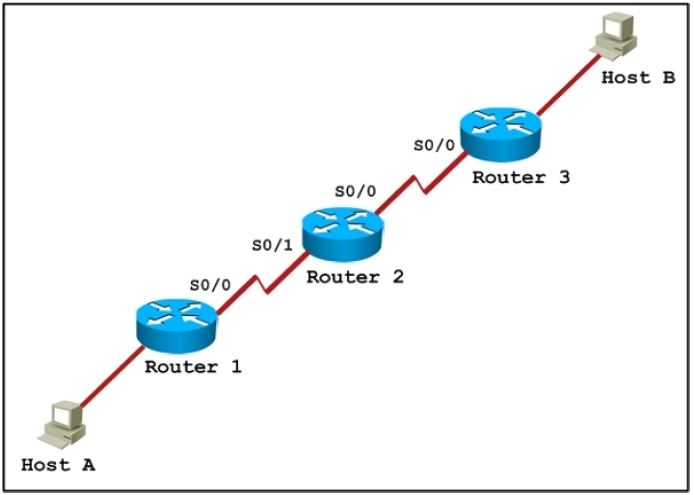
Host A pings interface S0/0 on router 3. What is the TTL value for that ping?
A. 252
B. 253
C. 254
D. 255
CISCO CCNA Exam – Q92
A network administrator is verifying the configuration of a newly installed host by establishing an FTP connection to a remote server. What is the highest layer of the protocol stack that the network administrator is using for this operation?
A. application
B. presentation
C. session
D. transport
E. internet
F. data link
CISCO CCNA Exam – Q91
Refer to the exhibit.
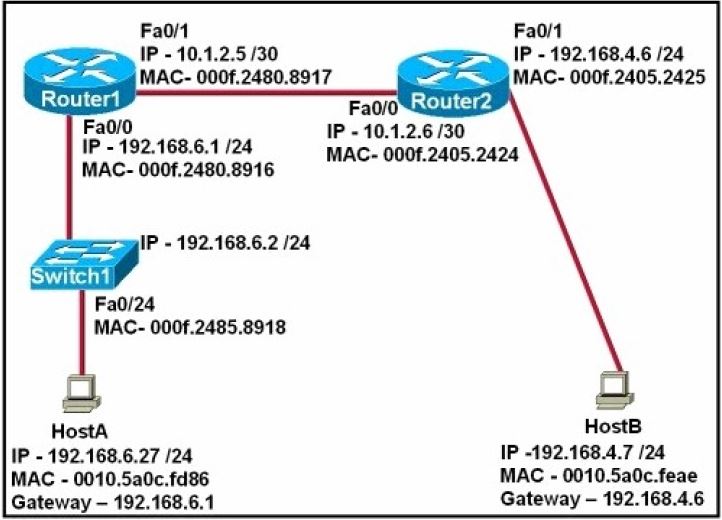
After HostA pings HostB, which entry will be in the ARP cache of HostA to support this transmission?
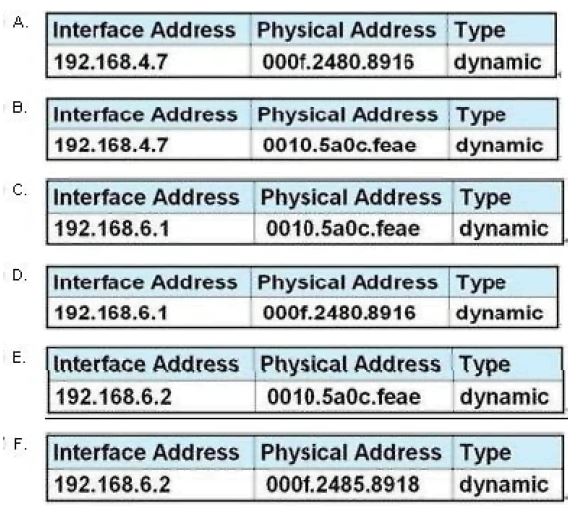
A. Exhibit A
B. Exhibit B
C. Exhibit C
D. Exhibit D
E. Exhibit E
F. Exhibit F
CISCO CCNA Exam – Q90
A network interface port has collision detection and carrier sensing enabled on a shared twisted pair network. From this statement, what is known about the network interface port?
A. This is a 10 Mb/s switch port.
B. This is a 100 Mb/s switch port.
C. This is an Ethernet port operating at half duplex.
D. This is an Ethernet port operating at full duplex.
E. This is a port on a network interface card in a PC.
CISCO CCNA Exam – Q89
A receiving host computes the checksum on a frame and determines that the frame is damaged. The frame is then discarded. At which OSI layer did this happen?
A. session
B. transport
C. network
D. data link
E. physical
